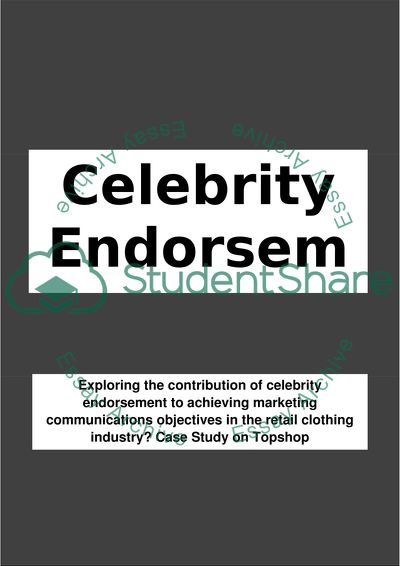Cite this document
(Celebrity Endorsement Literature review Example | Topics and Well Written Essays - 5000 words, n.d.)
Celebrity Endorsement Literature review Example | Topics and Well Written Essays - 5000 words. Retrieved from https://studentshare.org/social-science/1748130-what-is-the-contribution-of-celebrity-endorsement-to-achieving-marketing-communications-objectives-in-the-retail-clothing-industry-case-study-on-topshop
Celebrity Endorsement Literature review Example | Topics and Well Written Essays - 5000 words. Retrieved from https://studentshare.org/social-science/1748130-what-is-the-contribution-of-celebrity-endorsement-to-achieving-marketing-communications-objectives-in-the-retail-clothing-industry-case-study-on-topshop
(Celebrity Endorsement Literature Review Example | Topics and Well Written Essays - 5000 Words)
Celebrity Endorsement Literature Review Example | Topics and Well Written Essays - 5000 Words. https://studentshare.org/social-science/1748130-what-is-the-contribution-of-celebrity-endorsement-to-achieving-marketing-communications-objectives-in-the-retail-clothing-industry-case-study-on-topshop.
Celebrity Endorsement Literature Review Example | Topics and Well Written Essays - 5000 Words. https://studentshare.org/social-science/1748130-what-is-the-contribution-of-celebrity-endorsement-to-achieving-marketing-communications-objectives-in-the-retail-clothing-industry-case-study-on-topshop.
“Celebrity Endorsement Literature Review Example | Topics and Well Written Essays - 5000 Words”, n.d. https://studentshare.org/social-science/1748130-what-is-the-contribution-of-celebrity-endorsement-to-achieving-marketing-communications-objectives-in-the-retail-clothing-industry-case-study-on-topshop.


